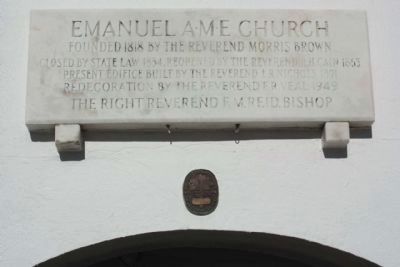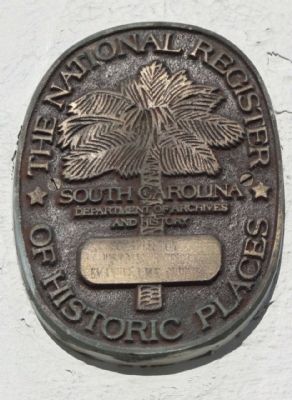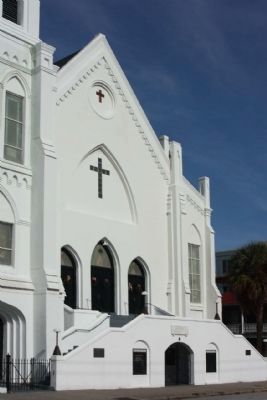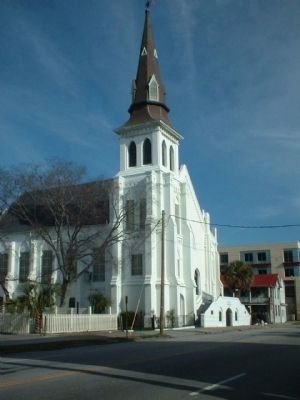Ansonborough in Charleston in Charleston County, South Carolina — The American South (South Atlantic)
Emanuel A.M.E. Church
Inscription.
Founded 1818 by the Reverend Morris Brown
Closed by State Law 1834. Reopened By The Reverend R.H. Cain 1865
Present Edifice Built By The Reverend L.R. Nichols 1891
Redecoration By The Reverend F.R. Veal 1949
The Right Reverend F.M. Reid, Bishop
Topics and series. This historical marker is listed in these topic lists: African Americans • Churches & Religion. In addition, it is included in the African Methodist Episcopal (AME) Church series list. A significant historical year for this entry is 1818.
Location. 32° 47.242′ N, 79° 55.979′ W. Marker is in Charleston, South Carolina, in Charleston County. It is in Ansonborough. Marker is on Calhoun Street, on the right when traveling east. Touch for map. Marker is at or near this postal address: 110 Calhoun Street, Charleston SC 29401, United States of America. Touch for directions.
Other nearby markers. At least 8 other markers are within walking distance of this marker. Emanuel AME Church (here, next to this marker); Emanuel African Methodist Episcopal Church (here, next to this marker); Harleston Boags Funeral Home (within shouting distance of this marker); Wade Hampton Monument (about 600 feet away, measured in a direct line); The Horn Work on Marion Square (about 700 feet away); Federal Building (about 700 feet away); 14 George Street (about 700 feet away); Wragg Square (about 700 feet away). Touch for a list and map of all markers in Charleston.
Regarding Emanuel A.M.E. Church. 1834 when all-black churches were outlawed. The congregation continued the tradition of the African church by worshipping underground until 1865 when it was formally reorganized, and the name Emanuel was adopted, meaning "God with us".
Related marker. Click here for another marker that is related to this marker. To better understand the relationship, study each marker in the order shown.
Also see . . . BlackPast.org, Morris Brown. A prosperous shoemaker by trade and charismatic religious leader, Brown travelled to Philadelphia to collaborate with the Rev. Richard Allen in the founding of the country’s first African Methodist Episcopal Church (AME) in 1816. (Submitted on January 30, 2012, by Mike Stroud of Bluffton, South Carolina.)
Credits. This page was last revised on March 29, 2023. It was originally submitted on January 30, 2012, by Mike Stroud of Bluffton, South Carolina. This page has been viewed 798 times since then and 40 times this year. Last updated on March 29, 2023, by C.F. Bruce of Columbia, South Carolina. Photos: 1, 2, 3, 4. submitted on January 30, 2012, by Mike Stroud of Bluffton, South Carolina. • Bernard Fisher was the editor who published this page.



